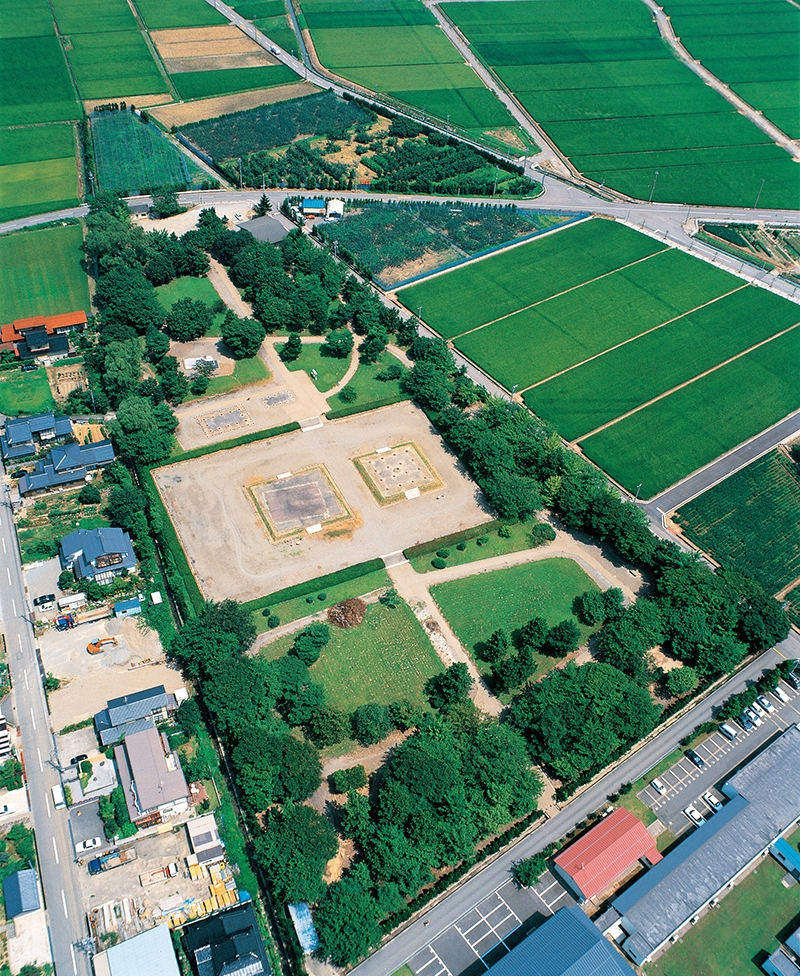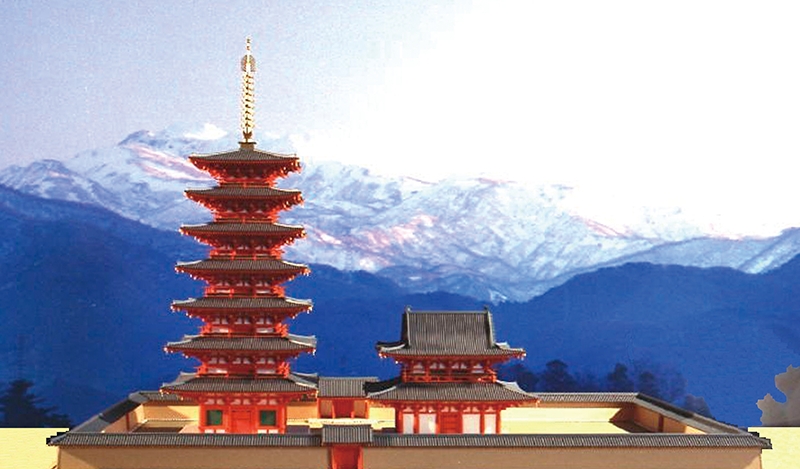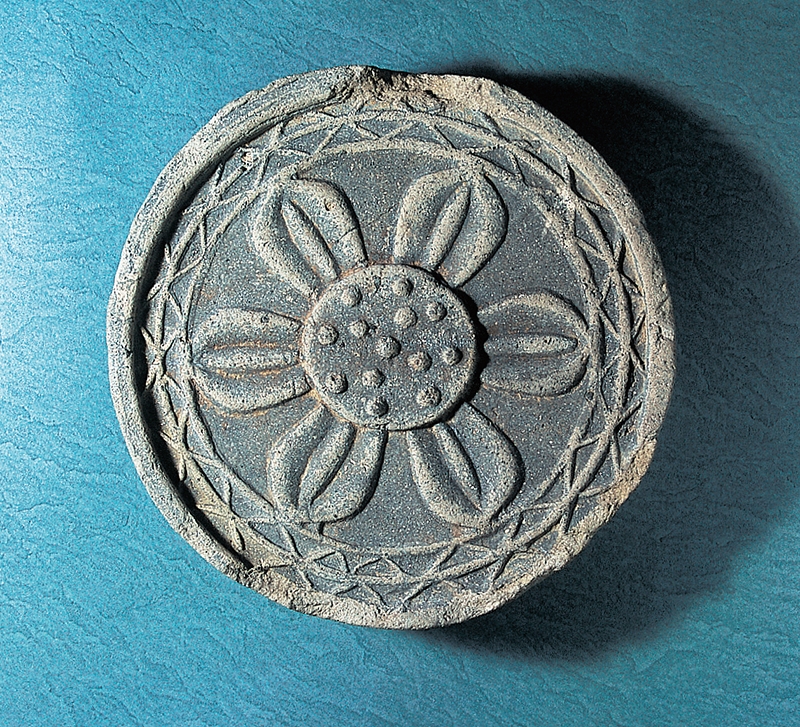Image




- Category
- Historical Sites Structural Sites
- Title
- Suematsu Temple Sites
- Areas
- South Area 18
- Registered date
- 1939.9.7
These sites are from the Suematsu Temple that was built in the late 7th century. It was known from Edo Period (1603-1868). In 1937, an excavation led by local resident Seiko Takamura discovered that this site was an ancient temple. In 1939, it was designated a national historic site.
In 1961, Takamura found a silver Wado-kaichin coin in an irrigation canal. This prompted strong calls for a full-scale excavation.
Between 1966 and 1967, the Japanese Agency for Cultural Affairs conducted a full-scale excavation. The team found traces of a temple from the 8th century inside a mud wall measuring approximately 80m wide from east to west. The layout is similar to Hokkiji Temple, which has its Main Hall in the west and a Tower in the east. The Main Hall is 19.8m from east and west, and 18.4m from south to north, which was standard in the 8th century. However, the tower is thought to have been extremely large at 7 stories high. No buildings other than the Main Hall and the tower were discovered at the temple. A number of roof tiles were unearthed around the Main Hall.
Different types of roof tiles were found. It was confirmed that these were made in what is now known as Nomi City and brought to the temple. It has been thought that the temple was built by the powerful Michino-kimi clan, who ruled the area at that time. However, recent studies have suggested that the Takarabeno-miyatsuko clan, another powerful family in Minami Kaga, was involved in the establishment of the temple. One reason for this is that unearthed artifacts include many pieces of earthenware produced in Minami Kaga.
The temple was not open to commoners. It is thought that a powerful family built the temple as a place to pray for their prosperity and to show off their wealth.